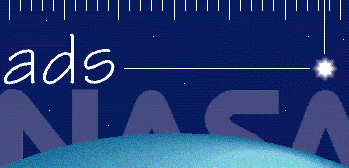Irkutsk State University
Irkutsk, Russian Federation
Irkutsk, Russian Federation
Irkutsk, Russian Federation
We present a new technique for estimating the absolute vertical and slant total electron content (TEC). The estimation is based on single-frequency joint phase and pseudorange GPS/GLONASS measurements at single stations. Estimated single-frequency vertical TEC agrees qualitatively and quantitatively with the dual-frequency vertical TEC. For analyzed stations a typical value of the difference between the single-frequency vertical TEC and dual-frequency ones generally does not exceed ~1.5 TECU with RMS up to ~3 TECU.
ionosphere, GPS, GLONASS, total electron content, single-frequency data
1. Afraimovich E.L., Perevalova N.P. GPS-monitoring verkhnei atmosfery Zemli [GPS-monitoring of the Earth's upper atmosphere]. Irkutsk, 2006, 480 p. (In Russian).
2. Afraimovich E.L., Yasukevich Yu.V. Using GPS-GLO-NASS-GALILEO data and IRI modeling for ionospheric calibration of radio telescopes and radio interferometers. J. Atmos. Solar-Terr. Phys. 2008, vol. 70, no. 15, pp. 1949-1962.
3. Afraimovich E.L., Astafyeva E.I., Oinats A.V., Yasukevich Y.V., Zhivetiev I.V. Global electron content: A new conception to track solar activity. Ann. Geophys. 2008, vol. 26, no. 2, pp. 335-344. DOI:https://doi.org/10.5194/angeo-26-335-2008.
4. Astafyeva E., Zakharenkova I., Foerster M. Ionospheric response to the 2015 St. Patrick's Day storm: a global multi-instrumental overview. J. Geophys. Res. Space Phys. 2015, vol. 120, no. 10, pp. 9023-9037. DOI:https://doi.org/10.1002/2015JA021629.
5. Blewitt G. An automatic editing algorithm for GPS data. Geophys. Res. Lett. 1990. vol. 17, pp. 483-492.
6. Cherniak I., Zakharenkova I., Krankowski A. Approaches for modeling ionosphere irregularities based on the TEC rate index. Earth, Planets and Space. 2014, vol. 66, p. 165. DOI:https://doi.org/10.1186/s40623-014-0165-z.
7. Dow J.M., Neilan R.E., Rizos C. The International GNSS Service in a changing landscape of Global Navigation Satellite Systems. J. Geodesy. 2009, vol. 83, pp. 191-198. DOI: 10.1007/ s0019000803003.
8. Durmaz M., Karslioglu M.O. Regional vertical total electron content (VTEC) modeling together with satellite and receiver differential code biases (DCBs) using semi-parametric multivariate adaptive regression B-splines (SP-BMARS). J. Geodesy. 2015, vol. 89, iss. 4, pp. 347-360. DOIhttps://doi.org/10.1007/s00190-014-0779-8.
9. Forte B., Aquino M. On the estimate and assessment of the ionospheric effects affecting low frequency radio astronomy measurements. 30th URSI General Assembly and Scientific Symp. 2011, pp. 1-4.
10. Gulyaeva T.L. Modification of the solar activity indices in the International Reference Ionosphere IRI and IRI-Plas models due to recent revision of sunspot number time. Solnechno-Zemnaua Fizika [Solar-Terrestrial Phys.]. 2016, vol. 2, no. 3, pp. 59-68. DOI: 10.12737 / 20872. (In Russian).
11. Gulyaeva T.L., Veselovsky I.S. Two-phase storm profile of global electron content in the ionosphere and plasmasphere of the Earth. J. Geophys. Res. 2012, vol. 117, A09324. DOI:https://doi.org/10.1029/2012JA018017.
12. Hernández-Pajares M., Juan J.M., Sanz J., Orus R., Garcia-Rigo A., Feltens J., Komjathy A., Schaer S.C., Krankowski A. The IGS VTEC maps: A reliable source of ionospheric information since 1998. J. Geophys. 2009, vol. 83: Special IGS Issue, pp. 263-275. DOI:https://doi.org/10.1007/s00190-008-0266-1.
13. Hocke K. Oscillations of global mean TEC. J. Geophys. Res. 2008, vol. 113, A04302. DOI:https://doi.org/10.1029/2007JA012798.
14. Ivanov V.B., Gefan G.D., Gorbachev O.A. Global empirical modelling of the total electron content of the ionosphere for satellite radio navigation systems. J. Atmos. Solar-Terr. Phys. 2011, vol. 73, pp. 1703-1707.
15. Kunitsyn V.E., Tereshchenko E.D., Andreeva E.S. Radiotomografiya ionosfery [Radio Tomography of the Ionosphere]. Moscow, Fizmatlit publ., 2007, 255 p. (In Russian).
16. Lanyi G.E., Roth T. A comparison of mapped and measured total ionospheric electron content using Global Positioning System and Beacon satellite observations. Radio Sci. 1988, vol. 23, no. 4, pp. 483-492. DOI:https://doi.org/10.1029/rs023i004p00483.
17. Lean J.L., Emmert J.T., Picone J.M., Meier R.R. Global and regional trends in ionospheric total electron content. J. Geophys. Res. 2011, vol. 116, A00H04. DOI:https://doi.org/10.1029/2010JA016378.
18. Liu L., Wan W., Ning B., Zhang M.-L. Climatology of the mean total electron content derived from GPS global ionospheric maps. J. Geophys. Res. 2009, vol. 114, A06308. DOI:https://doi.org/10.1029/2009JA014244.
19. Mannucci A.J., Wilson B.D., Yuan D.N., Ho C.H., Lindqwister U.J., Runge T.F. A global mapping technique for GPS-derived ionospheric TEC measurements. Radio Sci. 1998. vol. 33, iss. 3, pp. 565-582. DOI:https://doi.org/10.1029/97RS02707.
20. Mayer C., Jakowski N., Beckheinrich J., Engler E. Mitigation of the ionospheric range error in single-frequency GNSS applications. Proc. 21st Intern. Technical Meeting of the Satellite Division of the Institute of Navigation (ION GNSS 2008) . Savannah, GA. 2008, pp. 2370-2376.
21. Mylnikova A.A., Yasyukevich Y.V., Demyanov V.V. Estimating the vertical total electron content absolute value of the ionosphere from the GPS/GLONASS. Solnechno-Zemnaua Fizika [Solar-Terrestrial Phys.]. 2014, iss. 24, pp. 70-77. (In Russian).
22. Ovodenko V.B., Trekin V.V., Korenkova N.A., Klimenko M.V. Investigating range error compensation in UHF radar through IRI-2007 real-time updating: Preliminary results. Adv. Space Res. 2015. DOI:https://doi.org/10.1016/j.asr.2015.05.017.
23. Schaer S., Beutler G., Rothacher M. Mapping and predicting the ionosphere. Proc. IGS AC Workshop. Darmstadt, Germany, 1998a, pp. 307-320.
24. Schaer S., Gurtner W., Feltens J. IONEX: The ionosphere map exchange format. Version 1. Proc. IGS AC Workshop. Darmstadt, Germany, 1998b, pp. 233-247.
25. Schuler T., Oladipo O.A. Single-frequency GNSS ionospheric delay estimation - VTEC monitoring with GPS, GALILEO and COMPASS: 1st edition. Lulu Press, 2012. ISBN 978-1-4716-4225-8.
26. Schuler T., Oladipo O.A. Single-frequency single-site VTEC retrieval using the NeQuick2 ray tracer for obliquity factor determination. GPS Solution. 2014, vol. 18, pp. 115-122. DOI:https://doi.org/10.1007/s10291-013-0315-y.
27. Themens D.R., Jayachandran P.T. Solar activity variability in the IRI at high latitudes: Comparisons with GPS total electron content. J. Geophys. Res. Space Phys. 2016, vol. 121, pp. 3793-3807. DOIhttps://doi.org/10.1002/2016JA022664.
28. Themens D.R., Jayachandran P.T., Langley R.B. The nature of GPS differential receiver bias variability: An examination in the polar cap region. J. Geophys. Res. Space Phys. 2015, vol. 120, pp. 8155-8175. DOI:https://doi.org/10.1002/2015JA021639.
29. Yasyukevich Yu.V., Mylnikova A.A., Kunitsyn V.E., Padokhin A.M. Influence of GPS/GLONASS differential code biases on the determination accuracy of the absolute total electron content in the ionosphere. Geomagnetism and Aeronomy. 2015, vol. 55, no. 6. pp. 763-769 DOI:https://doi.org/10.1134/S00167932 1506016X.
30. URL: ftp://cddis.gsfc. nasa.gov/gps/products/ionex (accessed December 12, 2016).

















